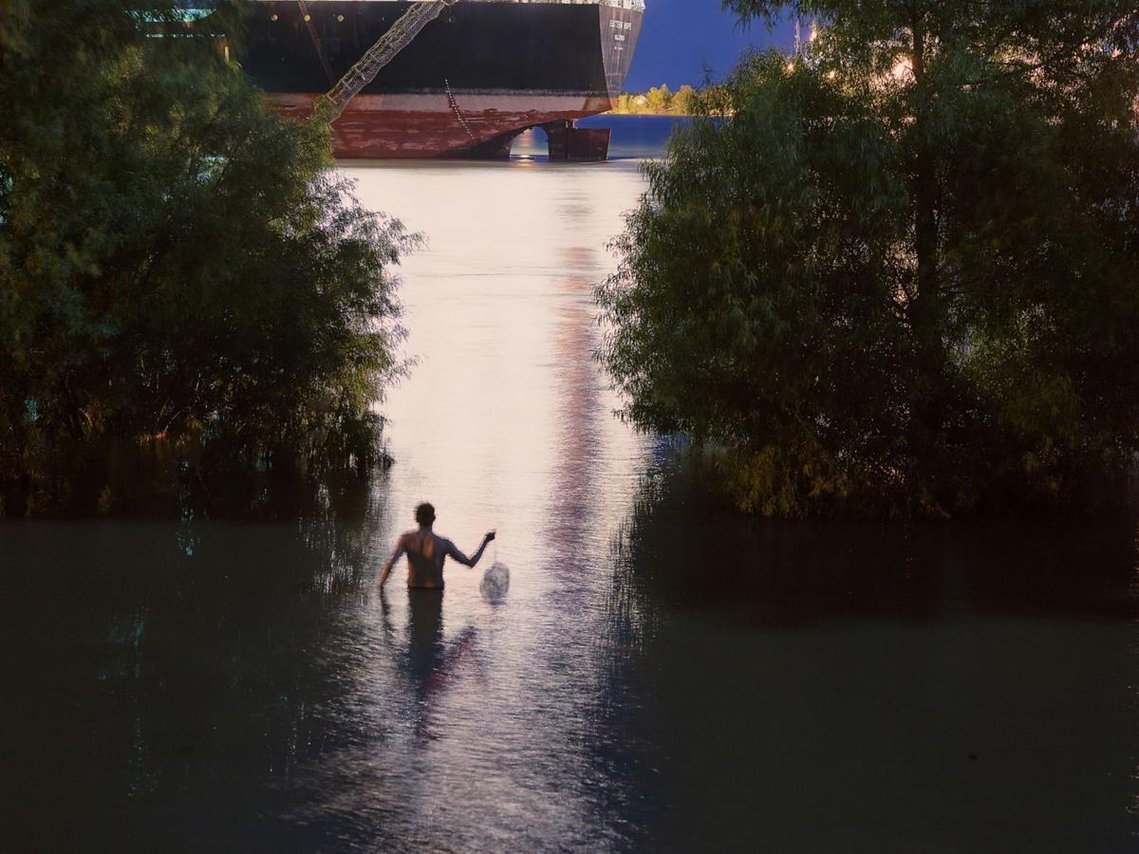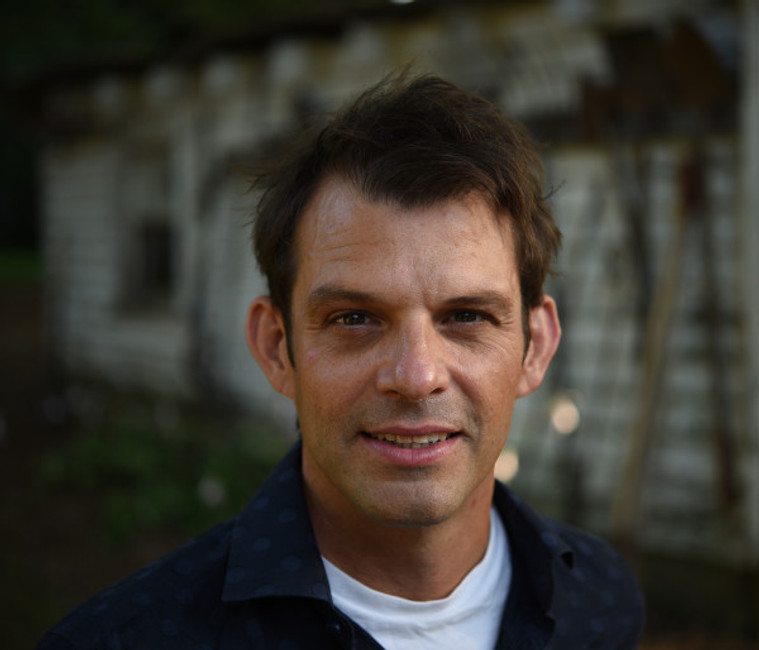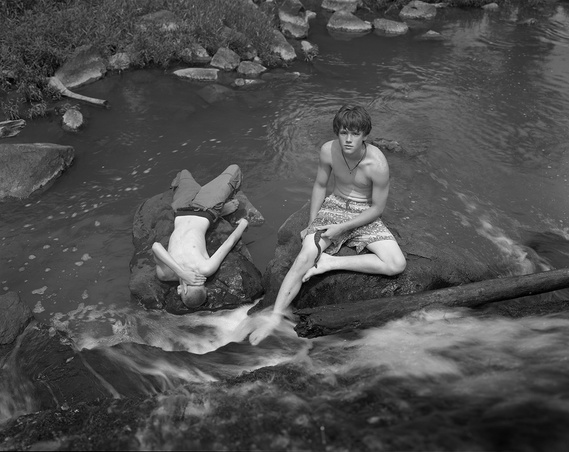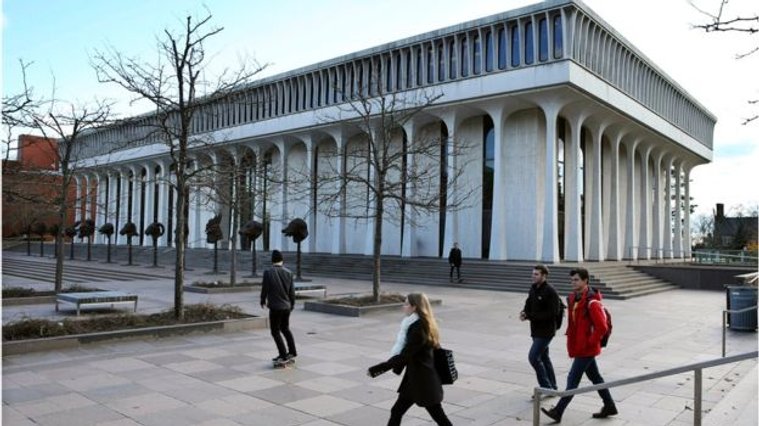What artists do: A conversation with Jeff Whetstone
by Heather Grace | Published in The Daily Princetonian | December 13, 2017
One Friday afternoon in late October, Jeff Whetstone, a professor in the visual arts department at Princeton University, was stationed in the Digital Learning Lab on the first floor of Lewis Library, sitting in a swivel chair with his black leather boots kicked off for comfort. From behind a brushed-silver computer monitor — in a large room that was empty save for twenty more of the machines — his round, wire-rimmed glasses shone with identical rectangular reflections in each lens, flashing from bright white to muted black as he navigated back and forth between image thumbnails.
“You know what a RED camera is?” he asked, before explaining: “It’s a cinema camera that takes these enormous, huge video files that are kind of un-editable.” He spoke the last word in syllabic bits, anticipating that he might mispronounce it otherwise. “So, I’m crunching them down to size for a video I’m doing,” a process, he explained, that was better done on campus than from his home in Princeton or his shared studio in Long Island City. “This is a magic thing — I don’t have one of these,” he said, cupping the cylindrical hard drive in both hands as it sat whirring away with its 64 gigabytes of RAM.
Whetstone was processing the video files for his most recent project — an experimental short documentary that was commissioned for “Prospect New Orleans,” a triennial exhibition of contemporary art taking place in the city, where it was shown last month after two years in the making. The footage focuses on the tension between society and wilderness, exemplified in the bustling activities along a small strip of land bordering the Mississippi River through which Whetstone documents the local catfishing economy and international shipping operations that take place amid daily life in New Orleans. “People are just eating out of the river while global capitalism floats by,” he said. This new work is also a continuation of Whetstone’s career-long exploration of Southern masculinity and the outdoors: earlier series include images of wild turkey hunters, natural landforms, shooting ranges, and camouflage-clad teens across the southern United States.
This anthropological angle in Whetstone’s artistic practice can be traced to his time as an undergraduate at Duke University, where he joined a cohort of students and professors living in and around migrant farmworker camps in eastern North Carolina and worked as a documentary photographer for the service group. Though Whetstone’s photographs were published, bringing attention to the cause of “Student Action with Farmworkers,” he admitted that the images were more concerned with achieving certain aesthetics than with directly helping the migrant community. “I had to consciously decide what kind of photographer I was being, and that decision took another five or six years,” he said.
Having grown up in the rural South, the forty-nine-year-old speaks with the accent of his hometown — a small farm town outside of Chattanooga, Tennessee — which he remembers fondly for its caves, mountains, and brooks, and where most of his extended family still lives. Through his life, Whetstone has lived in several other small Southern towns, including Whitesburg, Kentucky, where he lived in his mid-twenties while working for Appalshop, a cooperative dedicated to mobilizing the arts in rural areas of Appalachia. In light of the 2016 election, Whetstone’s desire to engage with rural communities and create empathetic portraits of white, working-class males — figures that are now hyper-politicized — seems to have been a kind of recognition of something that was worth paying attention to. “It’s funny how you make work, and then the world changes and it changes its meaning,” he said. That meaning took on a predictive quality, as Whetstone’s work in rural communities suggested to him the potency of the Trump electorate even before Election Day: “I was like ‘Trump’s gonna get elected, it’s gonna happen, I can see it,’” he said. “Trump spoke all those codes — I know what those codes were about, largely about race — and he excited a lot of racists. Just enough.”
Now in his third year as a professor of photography at the University, Whetstone was selected to be the chair of the Public Spaces Working Group for the newly formed Campus Iconography Committee, which to him is “a heavy-lifting and very important role.” The committee was created in response to a campus-wide controversy over the legacy of Woodrow Wilson, “a flat-out racist guy,” Whetstone remarked, and the University’s thirteenth President, after whom the School of Public and International Affairs is named. “If there was no Woodrow Wilson, we wouldn’t have that student action. They sat in the President’s office, and I think that’s a great thing — I did it when I was a student,” he said of the Black Lives Matter demonstrations on Princeton’s campus last year. “You can’t be apolitical anymore— especially now and especially here.”
“I’m not sure if anybody knows what artists really do,” Whetstone said, chuckling, “but one of the things we do is analyze visual information and cut to the chase on what markers and metaphors are active in a piece of art, and so that is what is needed here.” He watched his own hands to ensure that they were properly communicating his thoughts as he gestured. “The idea is probably to amend that history,” he said while rotating his hand in the air, his fingers bent as if trying to grasp the thing that needed changing.
“Why they went out and got the white male to do this,” referencing his own nomination, “when that seems to be the issue of white male-dominated iconography on campus ...” he trailed off. “It doesn’t look like that when you walk around: it’s a global university. But that history certainly was that. And that history was literally etched in stone and poured in bronze and hammered on the wall in big frames. And so how do you negotiate that history and reflect the present? Got any ideas?”




